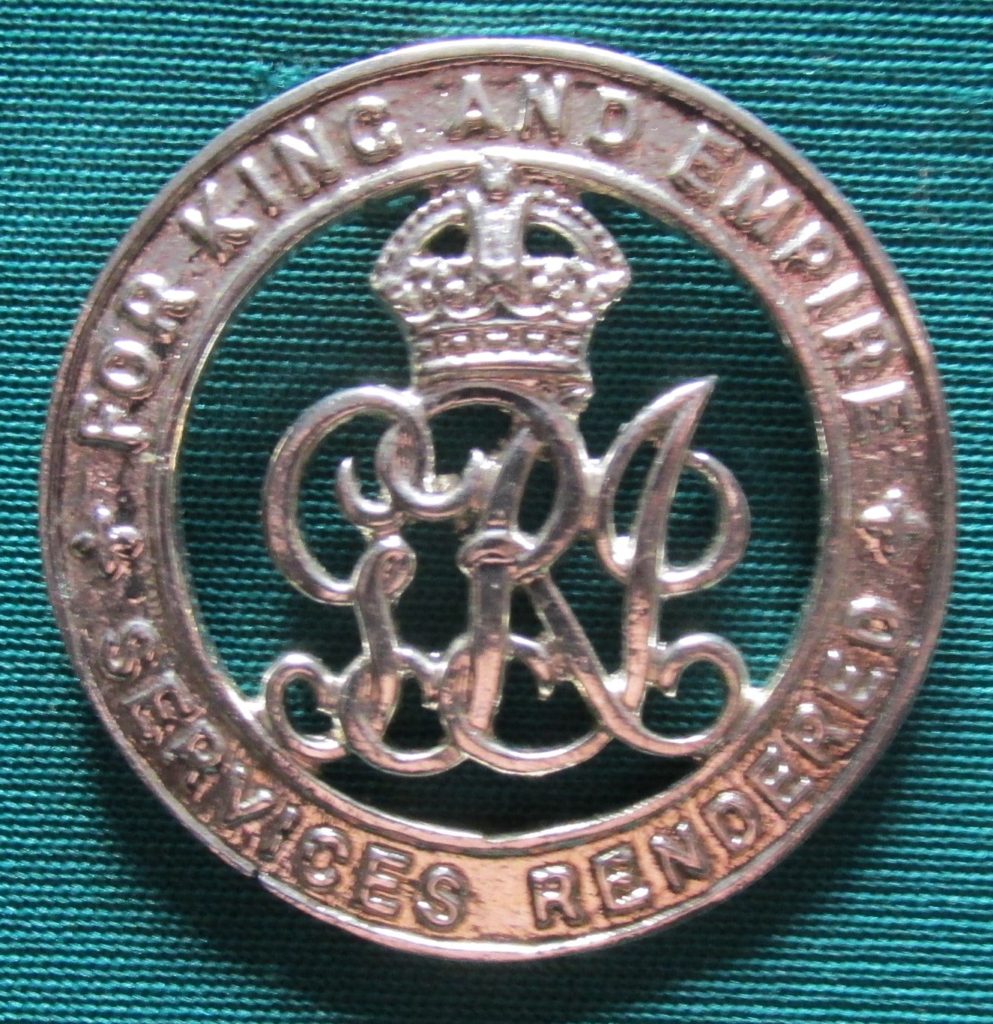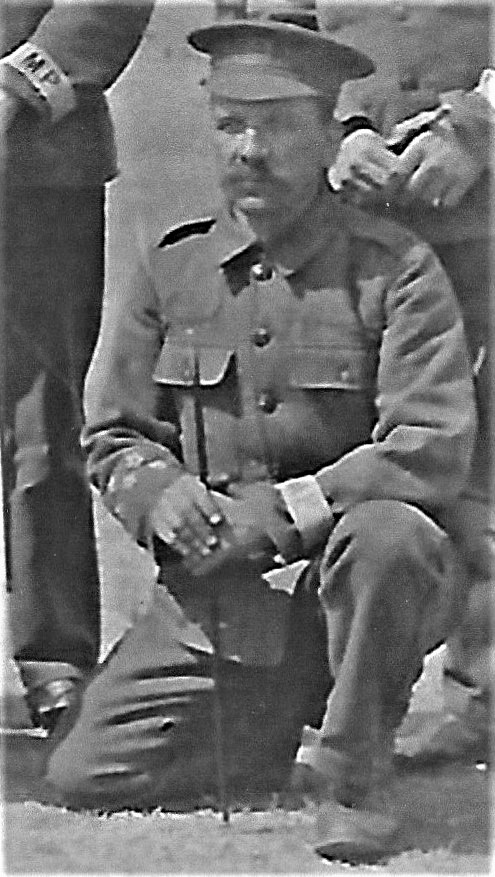265239 LANCE SERGEANT EDWARD JOHN NICKER
2/6TH (CYCLIST) BATTALION, SUFFOLK REGIMENT
DIED OF PNEUMONIA
AT HOME
22ND NOVEMBER 1918
AGE 21 YEARS
Born in Halesworth on 3rd July 1897, Edward John Nicker always known as Eddie, was the first child of John a leather currier and his wife Mary (née Hatcher) of 81 London Road. He received his education at the town’s Boy’s School where, apart from his talent as a first-rate player for the Halesworth Alliance Boys football club, he also, while under the tutelage of Mr Edgar Sewter, became a leading member of St Mary’s church choir, where he was known as a very regular attendant during Sunday services. On leaving school he found employment as a junior clerk for Cross Ram and Sons, solicitors at their premises in the Thoroughfare, remaining with them up until the outbreak of World War One in August 1914. The Halesworth Times newspaper of 6th October reported that, during the previous week, recruiting for the Army had been very successful, with twenty-two men enlisting from the local area including Eddie who, with another local lad, Geoffrey Cotton, had been despatched to Saxmundham to enlist in the 6th (Cyclists) Battalion, Suffolk Regiment, a unit of the Territorial Force tasked with Home Defence.
The details of Eddie’s service can be recorded fairly accurately, as his complete set of original military service papers have survived and can be viewed on the National Archive website. These and further research show that he had ‘signed on the dotted line’ on 30th September 1914 to serve as a Private Soldier with the regimental number of 1951 (later 265239). It is likely that he had been sent to a home defence battalion due to having been classified as an ‘immature’ entry, which indicates that he was small in stature and too young for overseas service for some time. Shortly after joining the 6th Suffolks, the battalion had been split, forming two separate units, although both retained the cyclist role. The 1/6th Suffolks remained in the county to supply mobile patrols to carry out observation duties along the Suffolk coast in the event of possible German landings, while the 2/6th Suffolks, from November 1914, were despatched to the town of Louth in Lincolnshire to patrol that county’s coastline. After receiving the minimum amount of training, Eddie was posted to serve with the 2/6th Suffolks. Here, along with the other recruits, he continued to train. During this time he must have shown much promise. Although standing a little over 5 feet 3 inches tall (160cms) and still just eighteen years of age, exactly a month after signing on he was promoted to Lance Corporal, a rank he continued to hold for the next year before receiving further promotions over quite a short period of time. By the following November he was listed as being a full Corporal, now commanding a section of between eight and twelve men in one of the four separate companies that made up his battalion. By the middle of 1915 the 2/6th Suffolks had headquarters in the seaside town of Skegness and detachments at Boston and Wainfleet. It was reported that the people of Lincolnshire held the men from Suffolk in very high regard. On 5th March 1916 Eddie received further promotion, being appointed to the rank of Lance Sergeant at the age of just nineteen years. Six weeks later he attended a month-long course held at the School of Musketry, located at Hythe on the Kent coast, another indication of how well he had settled to army life and what a bright lad he must have been to attend such a prestigious course. On his return to his battalion he would have been qualified to be one of the senior instructors in the handling and firing of the standard infantryman’s rifle and the recently issued Lewis light machine-gun. While training at Hythe it is possible that he may have met Sergeant Major Oscar Howard who had run the greengrocer’s shop at 8 Bridge Street, Halesworth. He had been a keen member and an accomplished marksman in the town’s Territorials, prior to being posted to the school as an instructor, shortly after the start of the war in 1914.
On his return to Lincolnshire and the 2/6th Suffolks, Eddie, with his new skills, would have been in demand, as from the middle of 1916 the battalion had began to supply drafts of men to be sent out to France as casualty replacements for those Suffolk battalions fighting at the front, with these casualties being replaced by those who had recently been conscripted to serve. While carrying out his instructor’s role he would have still been expected to continue some bicycle patrols. At the end of 1916 Eddie was admitted to hospital suffering from appendicitis, for which he was operated on. He then developed bronchitis. Details from his medical report indicate that he had been very slow to recover from this. At some time in the new year of 1917, he had returned to his battalion where he resumed his duties, including patrolling. On 17th August 1917 he was admitted to the Windthorpe Auxiliary Hospital, Skegness, suffering from pneumonia due to a chill he had caught the previous night while on patrol. He then remained in hospital for five weeks, with a temperature of over one hundred degrees. During this stay in hospital, his doctors’ notes show that he had become very feeble as his heart grew weaker. On 20th October 1917 Eddie appeared before a medical board at the 4th General Hospital, Lincoln, where he was found to be permanently unfit for further service, being discharged from the army on 10th November 1917. He eventually returned to Halesworth where, from 11th November until 11th June 1918, he was paid a pension of £1.10s.0d (£1.50p) per week. He would also have been able to apply for and be awarded a Silver War badge (see below). To the rear it would have been stamped with his personal number of B977. This, with a card certificate, would show that the badge had been issued to Eddie. He would then have worn it to show that he had ‘Done His Bit’.
Over the following months he remained at his home, no doubt being nursed by his mother Mary. In June 1918, possibly at the end of his pension payments, he had been lucky enough to be able to return to work for his previous employer, Cross Ram and Sons. On 11th November 1918 he, along with the population of the town, would have heard the news of Germany’s surrender. This would have led to much celebration. Sadly, within days Eddie fell ill again, passing away on 26th November, just over a year after being discharged from the army. This may have been why he was not been given a military funeral as given to some of the other lads who had died at home. The Halesworth Times of 3rd December 1918, reporting on Eddie’s funeral which had taken place on the previous Saturday afternoon of 30th November, listed the main mourners. They included his father’s brother, James, and his wife, who had also lost their young son, Victor, (see his story) in 1917. After a church service in Saint Mary’s, Eddie was laid to rest in the town’s cemetery, where he remains today.
After their son’s death his parents did not receive any war gratuity payments although, after applying for a Dependent’s Pension for the loss of Eddie, in May 1919 Mary had been awarded a weekly pension of 5s.0d (25p) with increases up until her death in 1926. These payments were then passed to his father, John, who died in 1941 at the age of eighty years. The photograph below is of John while he had been serving in the Halesworth Company of the 1st Volunteer Battalion, Suffolk Regiment (1887-1908). To the left cuff of his tunic, he wears the armband of a Regimental Policeman, while to his right cuff he wears five efficiency stars which indicates he had served for a minimum of twenty years.
Having not seen any overseas service, Eddie had not qualified for any medal awards, with only a silver war badge to show for three years of service. A check of the Commonwealth War Graves website shows no sign of a dedication for Eddie and it is not known if the family would have been presented with a memorial plaque and scroll.



